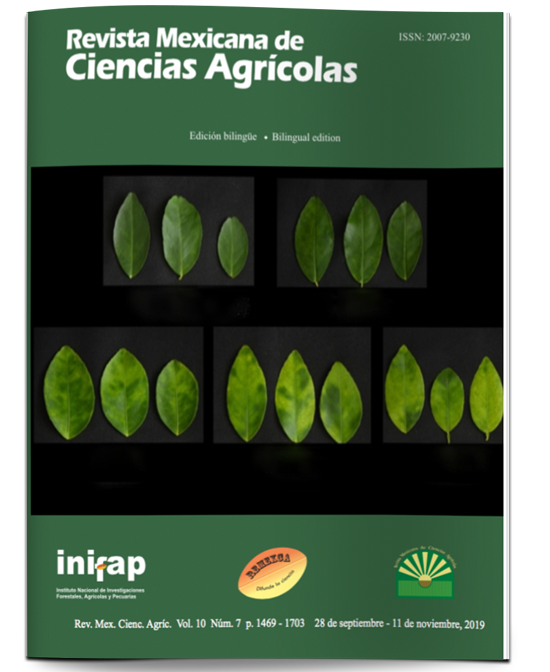Main diseases in citrus
DOI:
https://doi.org/10.29312/remexca.v10i7.1827Keywords:
control, epidemiology, pathogen, symptomatologyAbstract
Citrus fruits are one of the most important crops worldwide, as it is produced in 140 countries. One of the limitations for its production are diseases, they represent considerable damages in the orchards and due to this they diminish the production and cause millionaire losses in the citrus sector. The main diseases are: Phytophthora spp., Mycosphaerella citri, Lasiodiplodia theobromae, Candidatus Liberibacter spp. and citrus sadness virus (VTC). Pathogens can occur at any phenological stage of the crop and throughout the plant, whether in leaves, stems, roots or fruits. These microorganisms cause symptoms of chlorosis, mottling, less development and growth, deficiencies in the absorption of water and nutrients, rot, necrosis and in more extreme cases the death of the plant. For the management of phytopathogens there are different alternatives, the application of agrochemicals based on sulfur and copper (oxychloride and sulfate) are efficient in 70%, in addition, the use of resistant varieties (C. volkameriana, C. aurantium, among others), cultural measures such as thermotherapy, weed control and good drainage in the garden. On the other hand, to a lesser extent biological control is implemented, the application of beneficial microorganisms (Trichoderma, Bacillus subtilis) have demonstrated effectiveness up to 80%. As well as the release of parasitoids and predators such as Tamarixia radiata, Cycloneda sanguinea and Harmonia axyridis, which represent a good alternative for vector control. Therefore, the objective of this review is to describe the impact and status of the main citrus diseases present in Mexico.
Downloads
Published
How to Cite
Issue
Section
License
The authors who publish in Revista Mexicana de Ciencias Agrícolas accept the following conditions:
In accordance with copyright laws, Revista Mexicana de Ciencias Agrícolas recognizes and respects the authors’ moral right and ownership of property rights which will be transferred to the journal for dissemination in open access. Invariably, all the authors have to sign a letter of transfer of property rights and of originality of the article to Instituto Nacional de Investigaciones Forestales, Agrícolas y Pecuarias (INIFAP) [National Institute of Forestry, Agricultural and Livestock Research]. The author(s) must pay a fee for the reception of articles before proceeding to editorial review.
All the texts published by Revista Mexicana de Ciencias Agrícolas —with no exception— are distributed under a Creative Commons License Attribution-NonCommercial 4.0 International (CC BY-NC 4.0), which allows third parties to use the publication as long as the work’s authorship and its first publication in this journal are mentioned.
The author(s) can enter into independent and additional contractual agreements for the nonexclusive distribution of the version of the article published in Revista Mexicana de Ciencias Agrícolas (for example include it into an institutional repository or publish it in a book) as long as it is clearly and explicitly indicated that the work was published for the first time in Revista Mexicana de Ciencias Agrícolas.
For all the above, the authors shall send the Letter-transfer of Property Rights for the first publication duly filled in and signed by the author(s). This form must be sent as a PDF file to: revista_atm@yahoo.com.mx; cienciasagricola@inifap.gob.mx; remexca2017@gmail.
This work is licensed under a Creative Commons Attribution-Noncommercial 4.0 International license.



